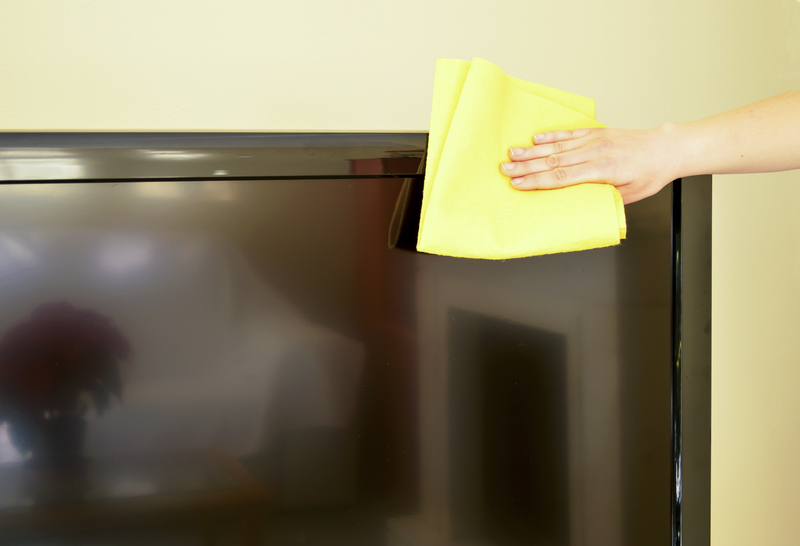Grease No More: Easy and Quick Cleaning Guide for Enamel Trays
Posted on 13/08/2025
Grease No More: Easy and Quick Cleaning Guide for Enamel Trays
Are you tired of scrubbing away stubborn, baked-on grease and food stains from your enamel trays? Welcome to the ultimate guide to making your enamel bakeware shine like new! In this comprehensive, SEO-optimized article, you'll learn everything there is to know about cleaning grease off enamel trays, keeping them pristine, and extending their lifespan. Whether you've been using your trays for Sunday roasts or sweet desserts, you'll find expert cleaning strategies, preventive care tips, and answers to all your most common questions. Say goodbye to sticky residue and hello to sparkling cookware!
Why Clean Enamel Trays Properly?
Enamel trays combine the beauty of vibrant finishes with the durability of metal. However, grease and food residue can build up over time, leading to discoloration, odors, and even a ruined finish. Proper cleaning keeps your enamel trays looking great, ensures optimal performance, and prevents lingering smells or flavors from old meals.
- Preservation: Regular care prevents chips, stains, and loss of shine.
- Hygiene: A clean enamel tray eliminates bacteria buildup and old food traces.
- Performance: Residue-free surfaces heat evenly, ensuring perfect cooking results every time.

Understanding Enamel Trays: Materials and Common Issues
Before diving into our simple cleaning guide, let's quickly look at what makes enamel trays special. These trays consist of a strong metal core--often steel or iron--coated in a layer of glassy enamel. This combination offers excellent heat distribution and a non-porous, easy-to-clean surface. However, they're susceptible to scratching, chips, and sometimes stubborn stains if not cared for correctly.
Common Enamel Tray Problems:
- Burnt-on grease and food particles
- Discoloration and stains
- Chipping or cracking from harsh scrubbing
Materials & Supplies You'll Need
For the best results, gather the following items before tackling your greasy enamel tray:
- Soft sponge or microfiber cloth
- Mild dish soap
- Baking soda
- White vinegar
- Hot water
- Plastic scraper or spatula (optional)
- Old toothbrush
- Rubber gloves
Quick-Step Cleaning Guide for Enamel Trays
Step 1: Let It Cool, Then Pre-Wash
Never fill a hot enamel tray with cold water. Allow your tray to cool to room temperature after cooking before beginning the cleaning process. This helps prevent thermal shock and possible cracks in the coating.
- Remove excess grease and crumbs with a paper towel.
- Rinse gently under warm water to loosen surface grime.
Step 2: Hot Soapy Soak
Fill your sink with hot water and mix in a few drops of mild dish soap. Place the enamel tray in the water and let it soak for 15-30 minutes. This step will help loosen baked-on grease and food debris, making removal much easier.
Step 3: Tackle Stubborn Grease and Stains
If residual grease or sticky residue remains, it's time for a little more elbow grease--with a gentle touch!
- Sprinkle baking soda over the greasy areas and spray or drizzle with white vinegar for a fizzing effect. Let this sit for 10 minutes.
- Using a soft sponge or microfiber cloth, gently scrub in circular motions. Avoid abrasive scouring pads--they can scratch and damage the enamel.
- For tight corners or stubborn spots, an old toothbrush works wonders.
- If needed, use a plastic scraper to lift burnt bits, being careful not to gouge the surface.
Step 4: Rinse and Dry
- Thoroughly rinse the tray under hot running water, ensuring all soap and residue are washed away.
- Dry immediately with a soft towel to prevent water spots and maintain the glossy finish.
Deep Cleaning for Tough Grease and Burnt-On Residue
If your enamel tray has been neglected or has severe stains, it may need a deep clean. Here's how to restore it:
Baking Soda Paste Method
- Make a thick paste of baking soda and water (about 3:1 ratio).
- Spread the paste generously onto greasy or stained areas.
- Let sit for at least 1 hour--overnight for best results.
- Gently scrub away the paste with a sponge or brush, then rinse thoroughly.
Vinegar Boil Technique
- Pour white vinegar into the tray, about 1/2-inch deep.
- Heat the enamel tray in the oven or on the stovetop (if safe) for 15 minutes at 300?F (150?C).
- Let the vinegar cool, then pour out and scrub gently with a sponge. Rinse and dry as usual.
Quick Tips for Everyday Maintenance
- *Wipe away spills immediately*--the sooner you clean grease, the easier it comes off.
- Use parchment paper or a silicone baking mat to prevent food from sticking in the first place.
- Never use metal utensils or steel wool on an enamel tray to avoid scratches and chips.
- Store your enamel bakeware in a dry, safe spot where it won't be banged against other hard objects.
- Always dry thoroughly to prevent surface rust on exposed metal where chips might occur.
What to Avoid When Cleaning Enamel Trays
To preserve the beauty of your enamel trays, keep these guidelines in mind:
- Don't use harsh or abrasive cleaners.
- Avoid soaking for days--prolonged immersion can weaken the enamel over time.
- Stay away from bleach and other caustic agents that may fade or pit the surface.
- Do not attempt to "scrape" burnt food off with metal tools, knives, or razors.
Preventing Grease Build-Up on Enamel Oven Trays
Shield your enamel oven trays from future messes with these simple, proactive steps:
- Line trays with foil, baking paper, or silicone mats before roasting fatty foods.
- Apply a thin coat of vegetable oil before use--it helps prevent sticking without damaging the enamel.
- Don't overload the tray: Give food enough space to cook evenly and minimize spillovers.
- Clean promptly after every use--don't wait until grease hardens.
Are Enamel Trays Dishwasher Safe?
While some enamel-coated trays are labeled dishwasher-safe, hand washing is always best for longevity. Dishwashers can cause tiny chips from rattling and may fade colored finishes. If you do use the dishwasher, make sure trays are placed gently and secured, away from hard pots and pans, and always check manufacturer guidelines.
Natural Cleaning Solutions for Enamel Trays
You don't need expensive, chemical-laden products to achieve a spotless enamel tray. These natural ingredients are powerful, safe, and eco-friendly:
- Baking Soda: Great for deodorizing and scrubbing without scratching.
- White Vinegar: Dissolves grease and provides a natural shine.
- Lemon Juice: Removes odors and adds a fresh, clean scent.
- Salt Paste: Mix salt with a bit of water to make a gentle abrasive cleaner for persistent stains.
Frequently Asked Questions about Cleaning Enamel Trays
Can I use oven cleaner on enamel trays?
No. Most oven cleaners are too harsh for enamel and can strip or dull the finish. Stick with mild soaps and baking soda-based solutions.
How do I remove burnt-on food from an enamel tray?
Soak the tray in hot soapy water. Then use a baking soda paste or vinegar boil (see above). Patience is key--soaking and gentle scrubbing are more effective and safer than aggressive scraping.
Is it safe to use a dishwasher for cleaning?
Hand washing is always gentler and safer. If using a dishwasher, ensure your tray is dishwasher-safe and not vibrant in color, as high temperatures and detergents can cause fading or chipping.
What should I do if my enamel tray is stained or discolored?
Baking soda and lemon juice, or a white vinegar soak, can usually remove most stains. Persistent discoloration may require multiple treatments, but always use non-abrasive methods.
How do I know if my enamel tray needs to be replaced?
If the enamel coating is badly chipped in many places, exposing the underlying metal (especially if showing rust), or if you notice cracks and food starting to stain the metal directly, it's time to invest in a new tray.

Summary: Your Quick and Easy Solution for Grease-Free Enamel Trays
- Let the tray cool before cleaning.
- Soak in hot, soapy water to loosen grease.
- Use mild, non-abrasive cleaners like baking soda and vinegar.
- Dry completely to prevent water spots.
- Practice regular cleaning and use preventive measures to keep trays spotless.
With these simple cleaning techniques, you'll never have to dread scrubbing grease off enamel trays again! Make cleaning a breeze, keep your kitchen hygienic, and ensure every meal you cook is just as delicious as the last--all thanks to a sparkling, stain-free enamel tray.
Conclusion: Grease No More--Enjoy Pristine Enamel Bakeware Every Day!
Enamel trays are a beautiful, long-lasting addition to any kitchen--but only with the right care! By following this easy and quick cleaning guide for enamel trays, you'll save time, prolong your cookware's life, and make every baking session more enjoyable. Remember, gentle, consistent cleaning is the secret to grease-free, gleaming enamel trays that last for years!
Happy cleaning--and happy cooking!




